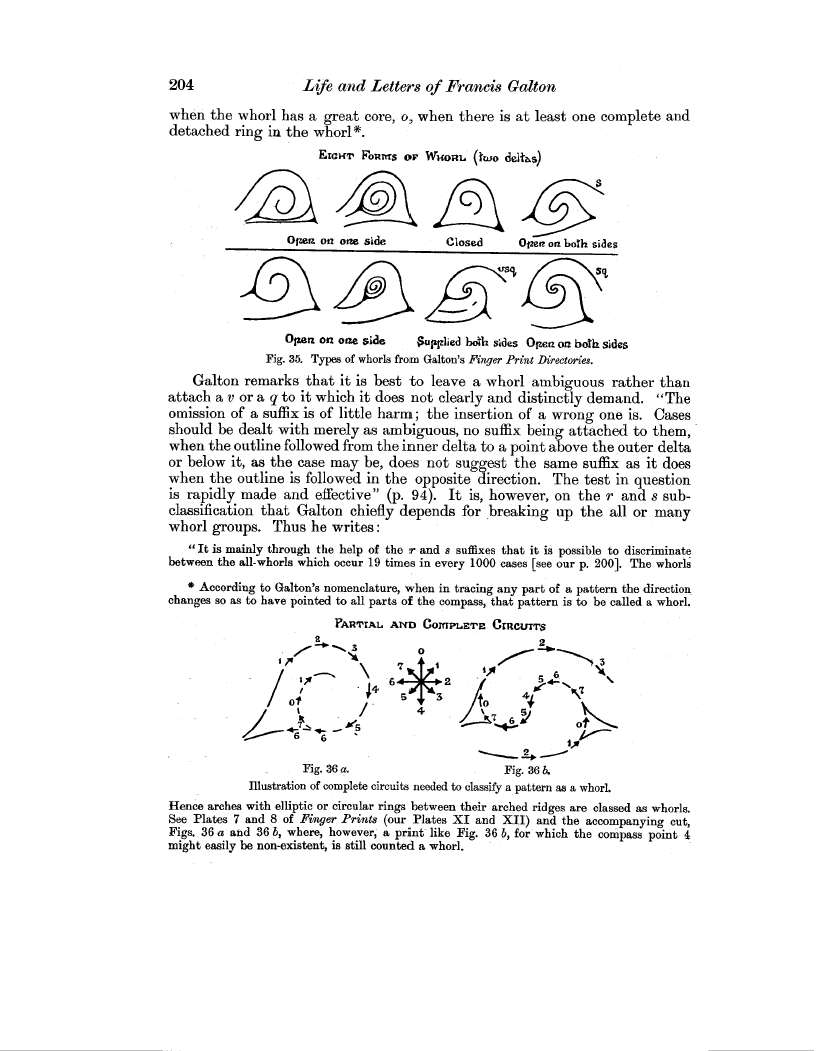| ||||||

OCR Rendition - approximate
204 Life and Letters of Francis Galton when the whorl has a great core, o, when there is at least one complete and detached ring in the whorl*. ErcHT FORMS OF WHORL (1'o deltas)  Open on one Side $uptzlied b&h sides Otzen on botlak sides Fig. 35. Types of whorls from Galton's Finger Print Directories. Galton remarks that it is best to leave a whorl ambiguous rather than attach a v or a q to it which it does not clearly and distinctly demand. "The omission of a suffix is of little harm; the insertion of a wrong one is. Cases should be dealt with merely as ambiguous, no suffix being attached to them, when the outline followed from the inner delta to a point above the outer delta or below it, as the case may be, does not suggest the same suffix as it does when the outline is followed in the opposite direction. The test in question is rapidly made and effective" (p. 94). It is, however, on the r and s subclassification that Galton chiefly depends for breaking up the all or many whorl groups. Thus he writes "It is mainly through the help of the r and s suffixes that it is possible to discriminate between the all-whorls which occur 19 times in every 1000 cases [see our p. 200]. The whorls * According to Galton's nomenclature, when in tracing any part of a pattern the direction changes so as to have pointed to all parts of the compass, that pattern is to be called a whorl. PARTIAL AND COMPLETE CIRCUTTS 26. 11,; if 1 ~ 6 2 ~f,~ \ of t0 4{ 4 , 6 6 ~ a +r 0 110 Fig. 36 a. Fig. 36 b. Illustration of complete circuits needed to classify a pattern as a whorl. Hence arches with elliptic or circular rings between their arched ridges are classed as whorls. See Plates 7 and 8 of Finger Prints (our Plates XI and XII) and the accompanying cut, Figs., 36 a and 36 b, where, however, a print- like Fig. 36 b, for which the compass point 4 might easily be non-existent, is still counted a whorl.
|